Related Research Articles
This article provides an overview of the transport infrastructure of Latvia.

The Northern Crusades or Baltic Crusades were Christianization campaigns undertaken by Catholic Christian military orders and kingdoms, primarily against the pagan Baltic, Finnic and West Slavic peoples around the southern and eastern shores of the Baltic Sea, and also against Orthodox Christian East Slavs.

Liepāja is a state city in western Latvia, located on the Baltic Sea. It is the largest city in the Kurzeme Region and the third-largest in the country after Riga and Daugavpils. It is an important ice-free port.

Courland is one of the Historical Latvian Lands in western Latvia. Courland's largest city is Liepāja, which is the third largest city in Latvia. The regions of Semigallia and Selonia are sometimes considered as part of Courland as they were formerly held by the same duke.
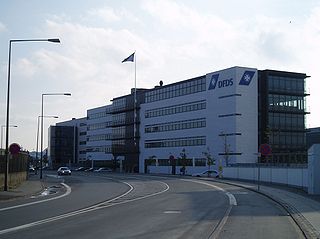
DFDS is a Danish international shipping and logistics company. The company's name is an abbreviation of Det Forenede Dampskibs-Selskab. DFDS was founded in 1866, when C.F. Tietgen merged the three biggest Danish steamship companies of that day.

Palanga is a resort city in western Lithuania, on the shore of the Baltic Sea.

Rokiškis is a city in northeastern Lithuania with a population of about 14,400.
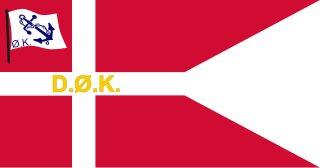
The EAC Invest A/S, formerly known as the Santa Fe Group and East Asiatic Company is a multinational holding and investment company, based in Copenhagen, Denmark. Originally founded by Hans Niels Andersen in 1887.

Aizpute is a town in western Latvia's South Kurzeme Municipality in the valley of the Tebra River, situated 50 km (31 mi) northeast of Liepāja.

Kościuszko was a passenger steamship that was built in Scotland in 1915, sailed as a troopship in both World Wars, was an ocean liner between the wars, carried displaced persons after World War II and was scrapped in England in 1950.

The Russian American Line was a subsidiary steamship line of the East Asiatic Company that was in business from 1900 until the time of the Russian Revolution in 1917. In 1906 it began passenger service from Libau to New York after the Hamburg America Line acquired a controlling interest in the line.

JSC Latvian Railway was established on 2 September 1991. It is seen as the successor of the Latvian State Railways company which was established on 5 August 1919 and dissolved by the Soviet occupation of Latvia in 1940.

SSCzar was an ocean liner for the then Russian American Line before World War I. In 1920-1930, the ship was named Estonia for the Baltic American Line, then named Pułaski for the PTTO and as a UK Ministry of War Transport troopship, and as Empire Penryn after World War II. The liner was built in Glasgow for the Russian American Line in 1912 and sailed on North Atlantic routes from Liepāja (Libau) to New York. On one eastbound voyage in October 1913, Czar was one of ten ships that came to the aid of the burning Uranium Line steamer Volturno.
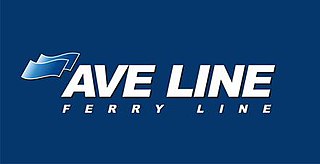
Ave Line is a Latvian shipping company that operates between Lübeck-Travemünde and Riga.

Grobiņas apriņķis was a historic county of the Courland Governorate and shortly of the Republic of Latvia. Its capital was Grobiņa (Grobin).

SS Fuso Maru was a Japanese ocean liner that was torpedoed by the United States Navy submarine USS Steelhead (SS-280) in the South China Sea 280 nautical miles (520 km) northwest of Cape Mayraira, Luzon, the Philippines, at, while she was travelling in Convoy MI-11 from Moji, Japan, to Miri, Borneo.
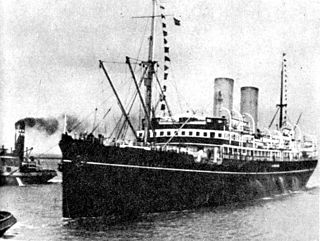
Polonia was a passenger steamship that was built in Scotland in 1910, originally named Kursk and was registered in the Russian Empire. She was an Allied troopship in the First World War, when she was briefly operated by Cunard Line. After the war she returned to civilian passenger service, in Latvian service until 1930 and then for Poland.

Gdynia-America Shipping Lines S.A. was a Polish-Danish joint stock company based in Gdynia, established in 1930 under the name of the Polish Transatlantic Shipping Company Limited (PTTO) in order to mark the Polish presence on the Atlantic; in 1934 transformed into Gdynia-America Shipping Lines.

SS Birma was a British-built transatlantic passenger ship. She was built in 1894 by Fairfield Shipbuilding and Engineering Company in Govan, United Kingdom, as Arundel Castle and later went through numerous ownership and name changes, including coming into the hands of the Russian American Line. In 1912, Birma was one of the ships to respond to the sinking of RMS Titanic. She was broken up in 1924 following acquisition by a German line after a liquidation sale.
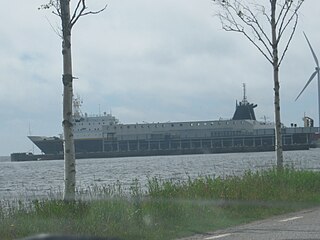
M/S RG I was a passenger/cargo ship which was last owned by the Finnish shipping company RG Line. The ship was a ro-ro ship. The ship was built in 1983 at the VEB Mathias Thesen Werft shipyard in Wismar, East Germany. The ship had a dead weight of 6704 tonnes. RG I was last registered in Finland and its homeport was in Vaasa. The ship travelled across the Kvarken between Vaasa, Finland and Umeå, Sweden up to 2012. The travel time was four hours and the ship used Finnish time. The ship carried 300 passengers.
References
- ↑ "Russian American Line". The Ships List. 2005-02-03. Archived from the original on 2008-05-16. Retrieved 2008-07-04.
- ↑ "Baltic American Line". The Ships List. 2005-02-03. Archived from the original on 2002-08-15. Retrieved 15 November 2020.
- ↑ "Baltic America Line History and Ephemera" . Retrieved 15 November 2020.
- ↑ Gibbs, CR Vernon (1970). Western Ocean Passenger Liners 1934–1969. Glasgow: Brown, Son & Ferguson. p. 174.